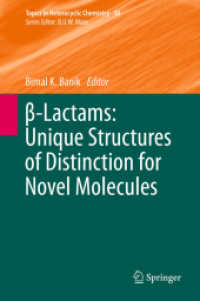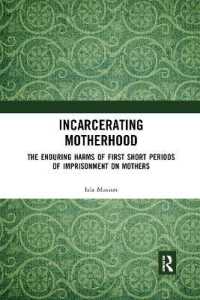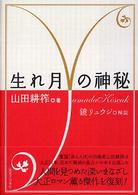Full Description
The Linguistics of Newswriting focuses on text production in journalistic media as both a socially relevant field of language use and as a strategic field of applied linguistics. The book discusses and paves the way for scientific projects in the emerging field of linguistics of newswriting. From empirical micro and theoretical macro perspectives, strategies and practices of research development and knowledge transformation are discussed. Thus, the book is addressed to researchers, teachers and coaches interested in the linguistics of professional writing in general and newswriting in particular. Together with the training materials provided on the internet www.news-writing.net, the book will also be useful to anyone who wants to become a more "discerning consumer" (Perry, 2005) or a more reflective producer of language in the media.
Contents
1. Acknowledgements; 2. Preface; 3. The parts of the book; 4. A. Challenge: Providing added value by applying linguistics; 5. A1. Situating newswriting as a socially relevant application field; 6. A2. Applying linguistics in a socially relevant professional setting; 7. A3. Adding value through knowledge transformation; 8. A4. Summary and conclusion; 9. B. Procedure: Adding value by re-contextualizing problems; 10. B1. Overcoming disciplinary boundaries; 11. B2. Contextualizing newswriting as the object of study; 12. B3. Triangulating newswriting research methods; 13. B4. Summary and conclusion; 14. C. Solution: Identifying the medialinguistic mindset; 15. C1. Investigating language environments in newswriting; 16. C2. Investigating language functions in newswriting; 17. C3. Investigating language structures in newswriting; 18. C4. Summary and conclusion; 19. D. Consequence: Shaping the mindset in knowledge transformation projects; 20. D1. Reflecting journalists' perspectives on newswriting; 21. D2. Learning from experienced writers; 22. D3. Sharing knowledge with experts in the newsrooms; 23. D4. Raising awareness across stakeholders' realities; 24. D5. Understanding emergence in complex dynamic settings; 25. D6. Summary and conclusion; 26. E. Dissemination: Fostering knowledge transformation through open databases; 27. E1. Processing ecological data from and for humans and computers; 28. E2. Layering corpora of media text production; 29. E3. Stimulating transformation discourse; 30. E4. Summary and conclusion; 31. List of key terms; 32. List of excerpts; 33. List of figures; 34. List of boxes; 35. List of references








